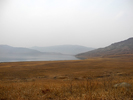Conservation of Migratory Birds and Habitat at Rason Migratory Bird Reserve:
Annotated Bird Checklist, March 25st- 31st 2014

As part of an international initiative to improve conservation opportunities for threatened Northeast Asian species (including the White-naped Crane), the Hanns Seidel Foundation and the East and North-East Asia (ENEA) Office of the United Nations Economic and Social Commission for Asia and the Pacific (UNESCAP) with support from Rason City and the Robert Bosch Foundation carried out a rapid assessment of birds and their habitats in Rason (lower Tuman River area, North-eastern part of DPRK) from 26th to 31st March 2014. The survey was held in connection with the NEASPEC (North-East Asian Subregional Programme for Environmental Cooperation) project on “Conservation and Rehabilitation of Habitats for Key Migratory Birds in North-East Asia”. For further information of the project, please refer to NEASPEC website (www.neaspec.org ). A formal report is under preparation by UNESCAP ENEA Office with input from participants.
Below follows, more simply, an annotated list of birds seen during the survey, which covered a range of habitats including: inshore marine waters; brackish and freshwater lakes and ponds; rice-fields and edge vegetation; a small estuary (that of the Tuman River) and river-bank; grass-covered hills and protected pine forest.
All counts listed below were made using tripod-mounted telescopes and binoculars by Mr. Spike Millington (Chief of the East Asian-Australasian Flyway Partnership – and Birds Korea member), Dr. Yuri Shibaev and Dr. Sergei Surmach (of the Far Eastern Branch of the Russian Academy of Sciences / Amur-Ussuri centre for Avian Biodiversity) and NM (Birds Korea), supported throughout by a team of regional experts and specialists from the organisations listed above including representatives from Hanns Seidel Foundation and UNESCAP ENEA Office and also from Yanbian University (Prof. Zhu Wei Hong) and Beijing Forestry University (Dr. Cai Lu).
Our bird-counting, conducted in mild conditions with rain on the 29th, was focused primarily on three lakes (Manpo, Sobonpo and Dongbonpo), largely within the 3,200ha Sonbong Migratory Bird Reserve, on March 28th, 29th and 30th; with additional observations made en route between Josan and Rajin (on 26th and 31st); from our hotel in Rajin, especially on 26th, 27th and early 28th and 30th; along the coast near Sonbong, especially on 28th and 30th, and near Uam Ri (in an area overlooking Al Island, also know as Alsom and Rando) on 30th; in woodland above Pipha Islet also on 30th; and in woodland above Rajin on the 31st.
Throughout the survey, we saw evidence of onward waterbird migration (including of seaducks, gulls and “early” shorebirds). Although our survey was limited in time and scope, we nonetheless recorded a total of 110 or 111 species, including several globally-threatened and near-threatened species (i.e. Japanese Quail, Falcated Duck, Long-tailed Duck, White-naped Crane, Hooded Crane, Far Eastern Curlew, Great Knot, Relict Gull and Ochre-rumped Bunting). We also found Ramsar-defined internationally important concentrations of five species of waterbird and Ramsar-defined internationally important concentrations (of 20,000 or more waterbirds) on both Manpo and Sobonpo. We also apparently recorded at least two new species for the DPRK (American Wigeon and Relict Gull).
The species recorded by the survey are listed below (with order and nomenclature following the 2013 Birds Korea Checklist), with the number in brackets an estimate of the total number recorded during the survey (i.e. revised to reduce possible double-counting). Comments on status are also provided where appropriate, based on global conservation status (from BirdLife International 2014) or existing literature.
- Japanese Quail Coturnix japonica (3)
Globally Near-threatened. One was heard on 28th and two were seen on 29th. - Common Pheasant Phasianus colchicus (35+)
Recorded daily. All records were presumed to refer to subspecies pallasi, as those males that were seen well appeared remarkably paler than “typical” karpovi (the only subspecies occurring in the Republic of Korea). - Taiga Bean Goose Anser fabalis (75)
Present in small numbers on both Manpo and Sobonpo, with a high count of 50 on 30th. - Tundra Bean Goose Anser serrirostris (575)
Present in small numbers, with flocks also seen moving north most days (including c.300 in one flock over Rajin on 31st). - Greater White-fronted Goose Anser albifrons (550)
Present in small numbers, with several observations of bird seen flying towards the north, and the largest feeding group being of c. 200 in rice-fields between Manpo and Sobonpo on 30th. - Mute Swan Cygnus olor (106).
At least 106 were counted on Manpo on 28th. This represents approximately 7% of the East Asian population of this species, based on the 1% threshold of 15 in Wetlands International (2014). This also appears to be the highest day-count of the species recorded on the Korean Peninsula in recent years. Although this species is not listed for this part of the DPRK by Tomek (1999-2002), it is mapped for the area in the Red Data Book of DPRK (2002) and was also photographed here by Dr. Bernhard Selinger (Hanns Seidel Fountain and Birds Korea member) in 2013. - Whooper Swan Cygnus cygnus (315)
A total of 303 were counted on Manpo on the 28th, with smaller numbers on Sobonpo. Video footage and observed departures both suggest that we missed the peak of this species, and MAB (2002) states that 7,500 individuals (an internationally important concentration) have previously been counted in this area in March. - Mandarin Duck Aix galericulata (135)
Seen both on the sea (loafing and on active migration) and in freshwater wetland. Wetlands International (2014) gives 35 as the 1% threshold for the Korean population of this species. Using this very conservative criterion, both Manpo and Sobonpo are probably internationally important for this species. - Gadwall Anas strepera (610)
Most numerous on Sobonpo, with 500 estimated there on the 30th. - Falcated Duck Anas falcata (3,100)
Globally Near-threatened. One of the most numerous duck species encountered during the survey. Wetlands International (2014) gives 830 as the 1% threshold, meaning that both Manpo (where 1,105 counted) and Sobonpo (where 2,000 counted) are internationally important for the species. - Eurasian Wigeon Anas penelope (12,200)
The most numerous species recorded during the survey, with 8,100 on Manpo, and 4,000 on Sobonpo. Wetlands International (2014) gives the 1% threshold on the East Asian-Australasian Flyway as 7,100, meaning Manpo is internationally important for the species. - American Wigeon Anas americana (1)
An adult male was seen at long-range on Manpo on the 28th. This species is not listed for the DPRK by Tomek (1999-2002). - Mallard Anas platyrhynchos (6,500)
Probably the commonest duck on Sobonpo during the survey period, with an estimated 5,500 there on the 30th. - Eastern Spot-billed Duck Anas zonorhyncha (250)
- Northern Shoveler Anas clypeata (370)
- Northern Pintail Anas acuta (570)
- Garganey Anas querquedula (15)
Four on the sea in Rajin harbour on the 26th and 11 on a pond between Manpo and Sobonpo on the 30th. Tomek (1999-2002) lists only one record for north-east DPRK. - Baikal Teal Anas formosa (350)
The 235 we counted on Sobonpo on the 30th is higher than any count in the DPRK given in Tomek (1999-2002) or in DPRK (2002). - Eurasian Teal Anas crecca (700)
- Common Pochard Aythya ferina (2,100)
The majority (1,600) were counted on Sobonpo on 29th and 30th. - Tufted Duck Aythya fuligula (4,650)
A single flock of 2,700 was counted on Sobonpo on the 29th; and 4,000 were estimated on the whole lake on 30th. Wetlands International (2014) provides a 1% threshold of this species in East Asia as 2,400. Therefore, Sobonpo is internationally important for the species. - Greater Scaup Aythya marila (160)
- Harlequin Duck (32)
Small numbers were found at several stops along the coast. - White-winged Scoter Melanitta deglandi (270)
Our survey likely missed the peak in this species, as the 90 recorded by the hotel in Rajin on the 25th fell rapidly to 43 on the 27th and perhaps <10 by the 30th. - American Scoter Melanitta americana (42)
Although considered by Tomek (1999) to be “a rare species” in the DPRK, fieldwork in the ROK and this rapid assessment both suggest that the species might be relatively numerous along the east coast in winter. - Long-tailed Duck Clangula hyemalis (390)
Recently listed as globally Vulnerable by BirdLife International (2014). Our survey likely missed the peak in this species as numbers appeared to fall rapidly in Rajin Harbour from 155 counted on the 25th to only a dozen or so seen in a quick scan on the 30th. However, several small groups were seen and a single group of 100 displaying birds was still present off from Uam Ri on the 30th. Tomek (1999) knew of only six records from the DPRK in the “last 50 years” and three of these came from the same area we surveyed (Al Island in late March 1959; and Rajin and Pipa on 10th and 11th April 1996). According to YS, this species is found in very large numbers (“thousands”) in the Peter the Great Bay (that stretches north along the Russian coast from the Tuman Estuary) - Common Goldeneye Bucephala clangula (1,200)
- Smew Mergellus albellus (7)
- Common Merganser Mergus merganser (230)
- Red-breasted Merganser Mergus serrator (850)
- Red-throated Loon Gavia stellata (1)
One or two were on the sea off from Uam Ri on the 30th. Tomek (1999-2002) only lists five records for the DPRK, “of which only one in last 50 years”. However, the paucity of records is no doubt due largely to the paucity of survey of inshore waters. - Arctic Loon Gavia arctica (1)
- Little Grebe Tachybaptus ruficollis (1)
- Red-necked Grebe Podiceps grisegena (110).
Tomek (1999-2002) traced only five DPRK records, and Duckworth (2006) recorded the species only once. However, our rapid assessment found several flocks of this species along the coast (with 63 near Manpo on the 28th on the sea the highest single-point count), with many individuals already in full or near-full breeding plumage. - Great Crested Grebe Podiceps cristatus (200)
- Black-necked Grebe Podiceps nigricollis (34)
- Eurasian Spoonbill Platalea leucorodia (19)
Seventeen were seen and photographed poorly at Manpo on 29th (in areas where they were absent on the 28th) and two were also seen on Sobonpo the same day. Tomek (1999-2002) cites only one record for the DPRK, though with caveats, and states that “without finding this species for certain, it should not be entered in the list of birds of North Korea”. - Black-crowned Night Heron Nycticorax nycticorax (1)
One heard over our hotel at 4AM on the 29th (SS only) was the only record. - Grey Heron Ardea cinerea (110).
- Great Egret Ardea alba (300)
Flocks were watched arriving in off the sea on at least four different dates, with the largest feeding flock being of 88 birds on Sobonpo on the 29th. The majority of individuals were assigned to nominate alba, but several modesta were also seen daily, with c.40 on 29th the highest day count. - Pelagic Cormorant Phalacrocorax pelagicus (52)
Seen in small numbers daily, with 35 on the 30th along the coast between Al Island and Songbong the highest day-count. - Great Cormorant Phalacrocorax carbo (450)
Largest flocks were on the Tuman River and on Sobonpo, with some suggestion of birds moving upriver or across the border into Russia. - Temminck’s Cormorant Phalacrocorax capillatus (10)
Several distant cormorants seen sitting on rocks with Pelagic Cormorants (one of which looked to have the diagnostic yellow lower mandible) and feeding at sea on the 30th were considered to be this species. - Eurasian Sparrowhawk Accipiter nisus (1)
A female was seen in woodland at Rajin on the 31st. - White-tailed Eagle Haliaeetus albicilla (2)
Two immatures were on a sandbank in the Tuman River on the 29th. - Common Kestrel Falco tinnunculus (2)
Two were seen on the 30th. - Peregrine Falcon Falco peregrinus (2)
An immature and an adult respectively were on Manpo and Sobonpo. - Eurasian Coot Fulica atra (3,500)
This species was present in large numbers on both Manpo (1,970 on 28th) and Sobonpo (1,500 on the 30th). - White-naped Crane Grus vipio (34)
This globally Vulnerable species was encountered four times by our survey: eleven were seen in flight over northern Sobonpo on the 29th; and in rice-fields between Manpo and southern Sobonpo, one was seen briefly in flight on 29th; and on 30th 13 were seen in flight there with 9-10 later seen feeding in the same area. - Hooded Crane Grus monacha (1)
This globally Vulnerable species was seen only once during the survey: one was seen at close range in rice-fields between Manpo and Sobonpo on the 29th. - Far Eastern Oystercatcher Haematopus ostralegus osculans (5)
Five were seen at the mouth of the Tuman River on the 29th. - Northern Lapwing Vanellus vanellus (50)
Although none were recorded on the 28th or 29th, at least 50 were present at Sobonpo on the 30th, including 1-2 displaying birds. - Little Ringed Plover Charadrius dubius (8)
- Kentish Plover Charadrius alexandrinus (2)
- Common Snipe Gallinago gallinago (4)
- Far Eastern Curlew Numenius madagascariensis (4)
Globally Vulnerable. One was on Manpo on the 28th; two were at the mouth of the Tuman River on the 29th and one was at Sobonpo on the 30th. - Spotted Redshank Tringa erythropus (1)
- Common Redshank Tringa totanus (2)
- Great Knot Calidris tenuirostris (1)
Globally Vulnerable. One was at the mouth of the Tuman River on the 29th. - Black-headed Gull Chroicocephalus ridibundus (230).
Numbers appeared to increase during the survey period, with 100+ seen on the 30th. - Relict Gull Ichthyaetus relictus (5)
Globally Vulnerable. Five (two adults in breeding plumage and three First-winters) were seen and photographed on Dongbonpo on the 30th. The two adults were seen and heard displaying; and at least four of the group fed actively by harassing Common Goldeneye, apparently forcing them to drop small fish (?). Neither DPRK (2002) nor Tomek (1999-2002) list this species for the DPRK. - Black-tailed Gull Larus crassirostris (170)
- Common Gull Larus canus (190)
- Glaucous Gull Larus hyperboreus (40)
- Vega Gull Larus vegae (17)
- Mongolian Gull Larus mongolicus (150)
Although not specifically mentioned by Tomek (1999), this was considered to be the commonest large gull taxon found during the survey, based on advanced wear in the primary tips and white-headedness of adults (even when most of the adult vegae were still streak-headed); on their long calls; and on First-winter plumages. Mongolian Gull is also considered most likely to be the taxon found nesting on Furugel’M Island in the Peter the Great Bay (YS & SS pers. com.). - Slaty-backed Gull Larus schistisagus (5)
- Heuglin’s Gull Larus heuglini (4)
Not specifically mentioned by Tomek, single adult taimyrensis were seen by the hotel and in Rajin town on 26th and 27th; and another adult taimyrensis was seen on the Tuman River on the 29th, when accompanied by a bird showing features better-recalling barabensis. - Spectacled Guillemot Cepphus carbo (11).
One was in Songbong harbour (outer part) on the 28th; and at least 10 were on the sea near to Uam-Ri (close to Al Island) on the 30th. It seems likely that the species might nest on the protected Al Island (also called Rando, this island was claimed to support “several tens of thousands...in May and June”: cited in Tomek, 1999-2002). As advised by Tomek, further survey of the island in May or June will be necessary to confirm whether the species (still) nests there; and if so, in what numbers. - Hill Pigeon Columba rupestris (2)
Two were on the headland at Uam Ri on the 30th. - Oriental Turtle Dove Streptopelia orientalis (17)
- Eurasian Hoopoe Upupa epops (1)
- Great Spotted Woodpecker Dendrocopos major (2)
- Grey-headed Woodpecker Picus canus (1)
- Bull-headed Shrike Lanius bucephalus (3)
- Long-tailed Shrike Lanius schach (1?)
A dark-masked, long-tailed bird, with pale underparts, thought to be this species, was seen briefly (by NM) from the moving vehicle near Josan Ri, in scrub edge overlooking the Tuman Floodplain on the 31st. Identification could not be confirmed.. - Chinese Grey Shrike Lanius sphenocercus (3)
- Eurasian Jay Garrulus glandarius (1)
- Eurasian Magpie Pica pica (70)
- Rook Corvus frugilegus (100)
- Carrion Crow Corvus corone (2)
- Marsh Tit Poecile palustris (3)
One was heard singing and two were seen and heard calling in woodland above Rajin on the 31st. - Coal Tit Periparus ater (5)
- Eastern Great Tit Parus minor (8)
- Eurasian Skylark Alauda arvensis (60)
An apparently locally numerous species, usually easily separated when in song from Far Eastern Skylark on the basis of its much more melodic song (and call-notes); and by its song-flight, in which the tail is held wide open and the “hand” held broad (giving the bird a rather pigeon or hawk-like outline) while the bird more or less ascends and descends directly. - Far Eastern Skylark Alauda japonica (40).
In song, usually easily told from Eurasian Skylark, by its less melodic song (lacking the vocal range and variation of arvensis), typically given in a circling song-flight, with tail held only part-open (so appearing notched) and the “hand” held tighter. - Vinous-throated Parrotbill Sinosuthera webbiana (30)
The few individuals that were seen well appeared paler (and perhaps slightly larger?) than birds seen in the ROK. Might such birds belong to subspecies mantschuricus? - Goldcrest Regulus regulus (7)
- Chinese Nuthatch Sitta villosa (6)
Apparently two or more pairs were found in a small area of pine-forest near Songbong on 30th (including one pair entering a nest-hole); and another two were seen in woodland in Rajin on 31st. - Red-billed Starling Spodiopsar sericeus (3)
One was next to the Tuman River on 29th, only 200m or so from the border with Russia – a country in which the species was apparently only first-recorded in 2011: from April 20th to May 2nd, on Bol’shoi Pelis Island, Peter the Great Bay (Gluschenko et al. 2012). Two were at the north end of Sobonpo the same day. This species was first-recorded in the ROK in 2000 (Choi et al. 2011) and in the DPRK in 2001 (Duckworth 2004). - White-cheeked Starling Spodiopsar cineraceus (7)
- Common Starling Sturnus vulgaris (3)
Three were feeding with White-cheeked Starlings and Rooks in burnt fields close to the Tuman River on the 29th. Duckworth (2006) lists only two previous DPRK records. - Naumann’s Thrush Turdus naumanni (4)
- Dusky Thrush Turdus eunomus (5)
- Daurian Redstart Phoenicurus auroreus (1)
- Eurasian Tree Sparrow Passer montanus (325)
- Siberian Accentor Prunella montanella (3)
Two heard calling on the 30th at Uam Ri are three days later than the latest spring dates given in Tomek (1999-2002). - White Wagtail Motacilla alba (17)
Leucopsis made up most of the records; the only lugens seen were three along the Tuman River on the 29th. - Brambling Fringilla montifringilla (15+)
- Long-tailed Rosefinch Carpodacus sibiricus (1)
- Pallas’s Rosefinch Carpodacus roseus (1)
- Grey-capped Greenfinch Chloris sinica (65)
- Common Redpoll Acanthis flammea (1)
- Eurasian Siskin Spinus spinus (5)
- Meadow Bunting Emberiza cioides (25)
Several males seen in song appeared rather paler-mantled and more cleanly-streaked on the upperparts than birds typically found further south; they also had more obvious grey on the neck sides and throat. Although measurements could not be taken, these birds appear to match written descriptions of weigoldi (e.g. in Byers et al. 1995). - Rustic Bunting Emberiza rustica (260)
- Yellow-throated Bunting Emberiza elegans (23)
- Black-faced Bunting Emberiza spodocephala (1)
- Pallas’s Reed Bunting Emberiza pallasi (1)
- Ochre-rumped Bunting Emberiza yessoensis (2)
Two males were in song in a small area of reeds close to Sobonpo on March 30th. - Common Reed Bunting Emberiza schoeniclus (1)
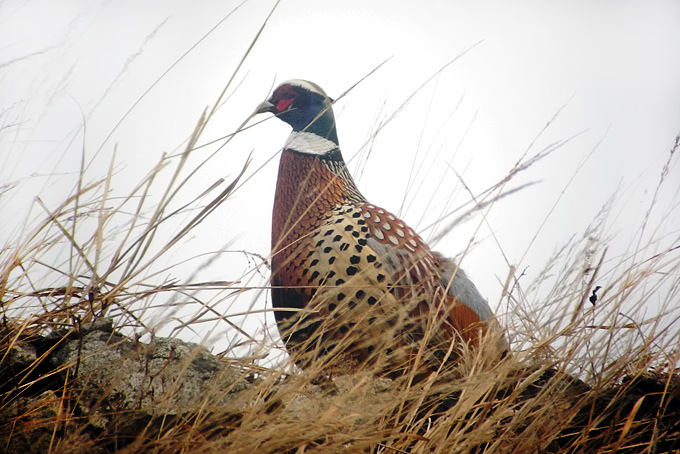
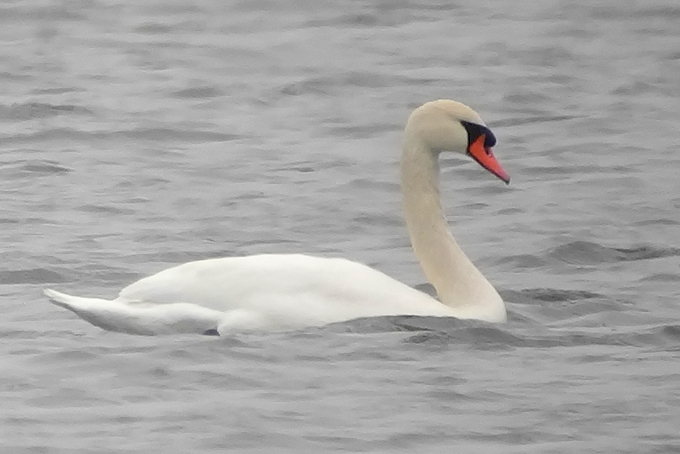

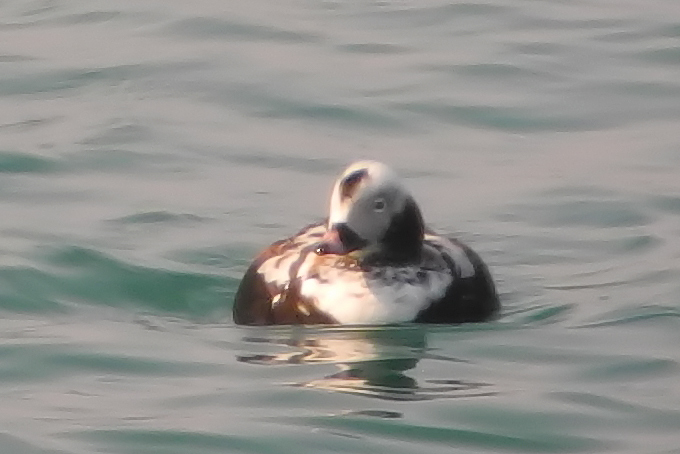


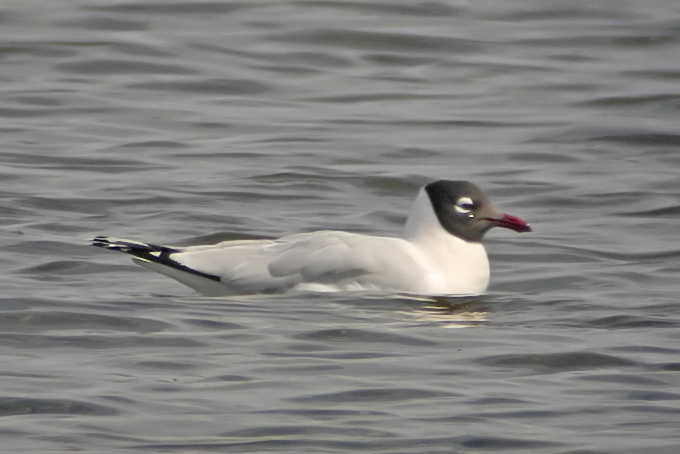

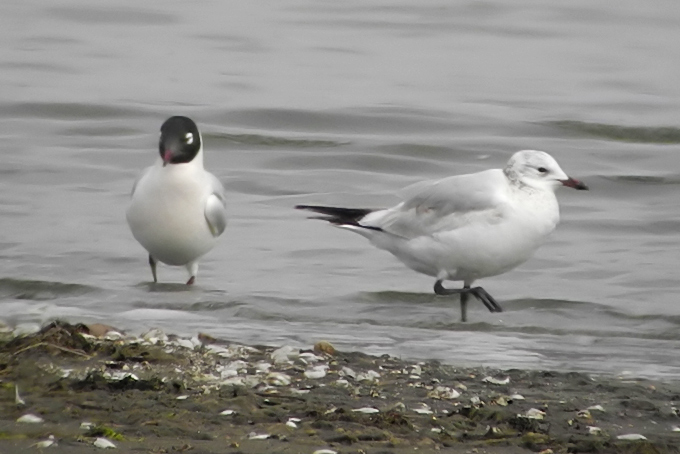

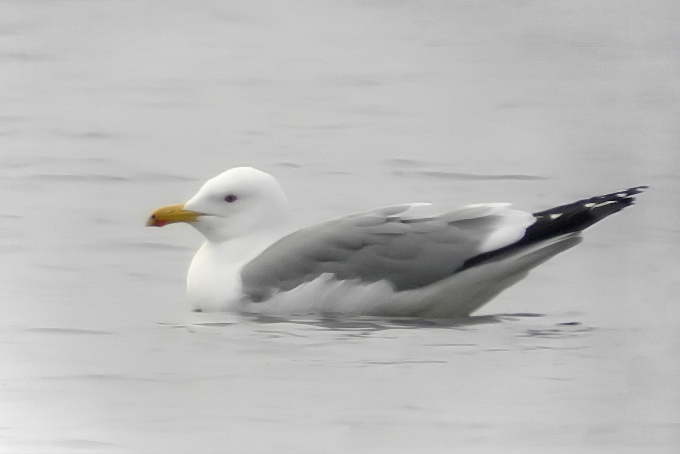
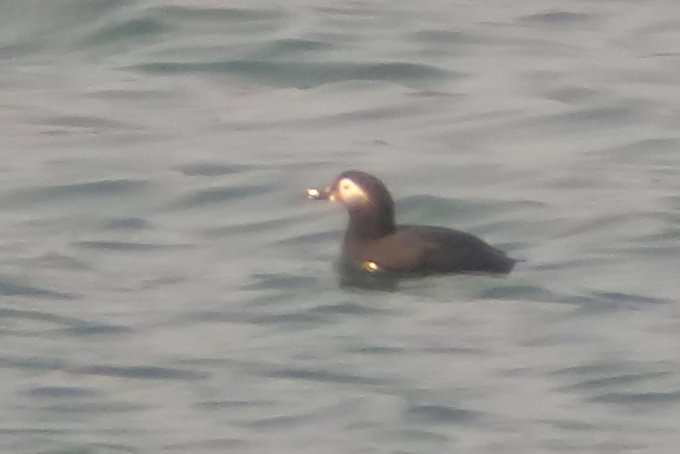



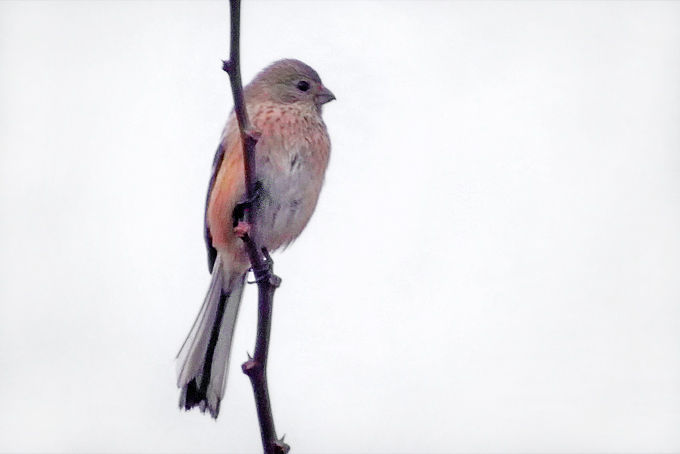


In addition, a mounted Mountain Hawk-Eagle Nisaetus nipalensis was found and photographed by our team in the international bookshop in central Rajin. According to the shop-workers, the bird was “procured” locally; and was apparently brought into the shop one or two winters earlier. There are only three records of this species in Korea – all from Gangwon Province dated January 1914; February 1925 and September 1934 (Austin 1948). However, the species now occurs regularly (apparently increasingly so) in Russian forests close to the border with the DPRK so might also occur regularly in this area.
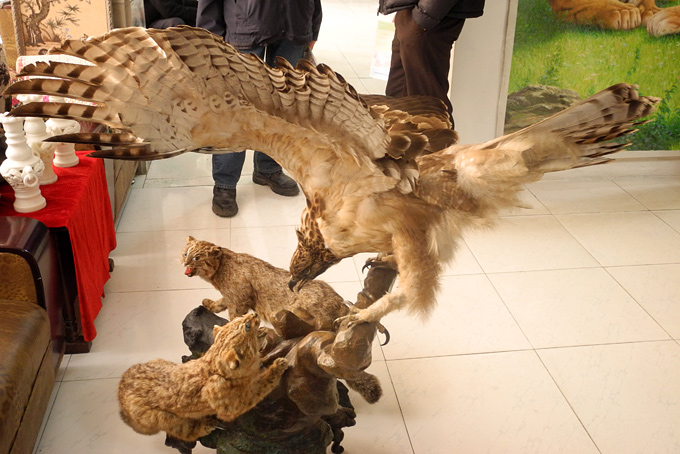
References
- Austin, O. L., Jr 1948. The birds of Korea. Bulletin of the Museum of Comparative Zoology, Harvard University 101: 1-301.
- BirdLife International. 2014. IUCN Red List for birds. Downloaded on multiple dates in April 2014.
- Byers C., Olsson, U. & J. Curson. 1995. Buntings and Sparrows. A Guide to the Buntings and North American Sparrows. Published by Pica Press.
- Choi C-Y., Park J-G., Moores, N., Kim E-M., Kang C-W., Nam H-Y. & Kim S-M. 2011. The recent increase of the Red-billed Starling Sturnus sericeus in the Republic of Korea. Forktail 27: 84-86.
- DPRK. 2002. Red Data Book of DPRK (Animal). Pyongyang, 2002.
- Duckworth, J.W. 2004. Eight birds new to DPR Korea. Forktail 116-120.
- Duckworth, J.W. 2006. Records of some bird species hitherto rarely found in DPR Korea. Bull. British Ornithologists’ Club. 2006 126 (4) 253-290.
- Gluschenko Yu. N., Kalnitskaya I., Katin I., Korobov D. & Liu Huajin (2012). Faunistic notes on the birds of Primorye and adjacent areas of Northeast China. Far East J. Orn., 3:53-60. Publisher’s translation into English.
- MAB 2002. Wetland (Waterfowl Habitat) and Its Conservation in DPR Korea. MAB National Committee of DPR Korea, with support from East Asian Biosphere Reserve Network (EABRN) of UNESCO-MAB Programme. Pyongyang 2002.
- Tomek, T. 1999-2002. The birds of North Korea. Acta Zoologica Cracoviensia 42: 1-217; 45: 1-235 (in English).
- Wetlands International. 2014. Waterbird Population Estimates 5. Downloaded from the online database on April 7th 2014.









